Our scope is to predict restaurant guests from telco data.
deriving capture rate from footfall und
activities
The underlying model can be described as
greceipts(t)../f/fpeople/receipt(t) = cratea(t)aact(t)fext + cratef(t)afoot(t)fext + bbias(t)
Where activities and footfall are not independent.
We have to understand the underlying relationship between telco data and reference data.
Each commercial activities that capture a fraction of the users passing by. The quote of users capture by the activity depends on:
How exactely the capture rate depends on the specific location features is going to be investigated by training a prediction model.
We will proceed in the following way:
Degeneracy is a measure of sparsity or replication of states, in this case we use the term to define the recurrency of pois in a spatial region.
The operative definition is to calculate the distribution of other pois at a certain distance. To reduce the complexity of the metric we perform a parabolic interpolation and define the degeneracy as the intercept of the parabola fitting the radial density distribution.
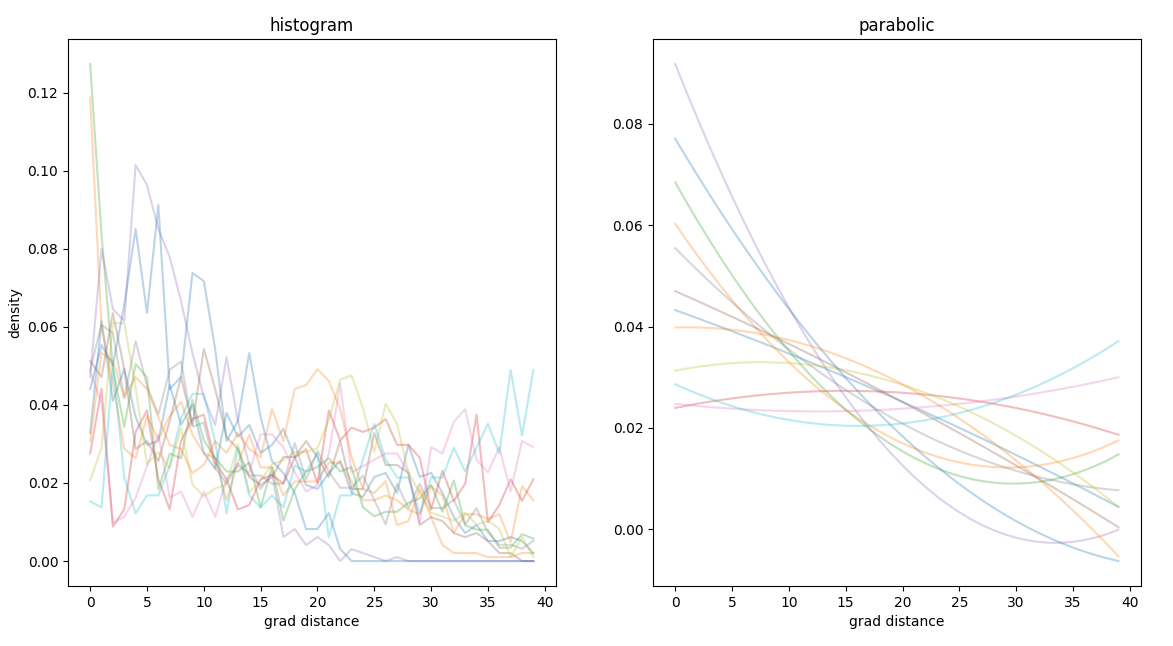 spatial
degeneracy, only the intercept is taken into consideration
spatial
degeneracy, only the intercept is taken into consideration
We enrich poi information with official statistical data like:
We don’t know a priori which parameter is relevant for learning and we might have surprisingly perfomances from features that do not seem to have connection with the metric.
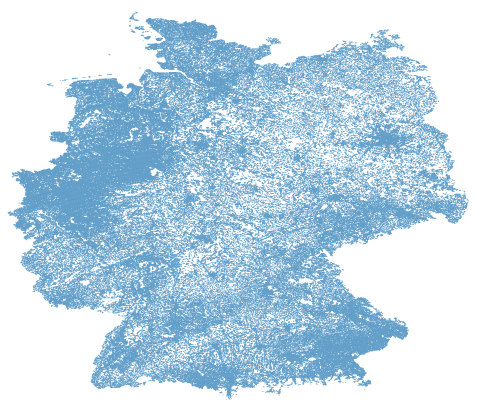 distribution of official census data
distribution of official census data
To obtain the value of population density we interpolate over the neighboring tiles with official census data using a stiff multiquadratic function.
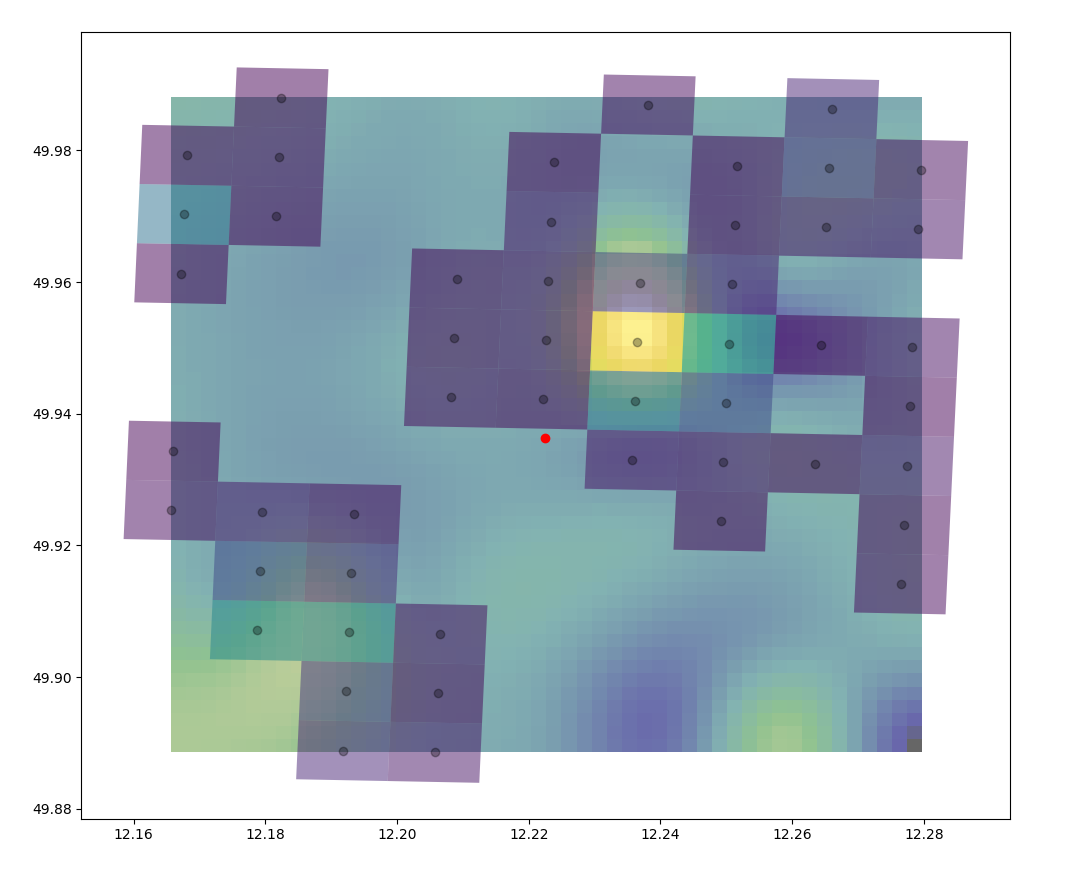 determination of the density value coming from
the neighboring tiles of the official statistics
determination of the density value coming from
the neighboring tiles of the official statistics
For each location we download the local network and calculate the isochrones
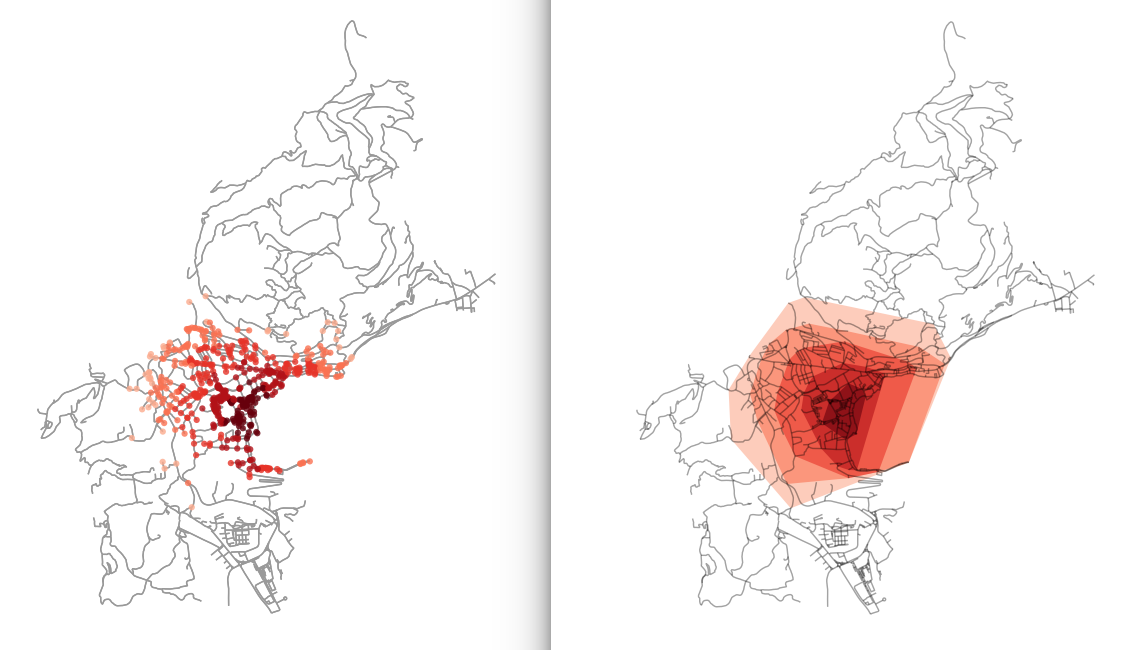 isochrone, selected nodes and convex
hulls
isochrone, selected nodes and convex
hulls
On a regular grid over the whole country we route all the users across the street and associate a footfall count to each tile crossing that street.
 footfall over the tiles per hour and
day
footfall over the tiles per hour and
day
We enrich the location information with street statistics
bastbast_fr, bast_su: correction factors for
friday and sundayWe see anomalous peaks and missing points in reference data which we have substituted by the average
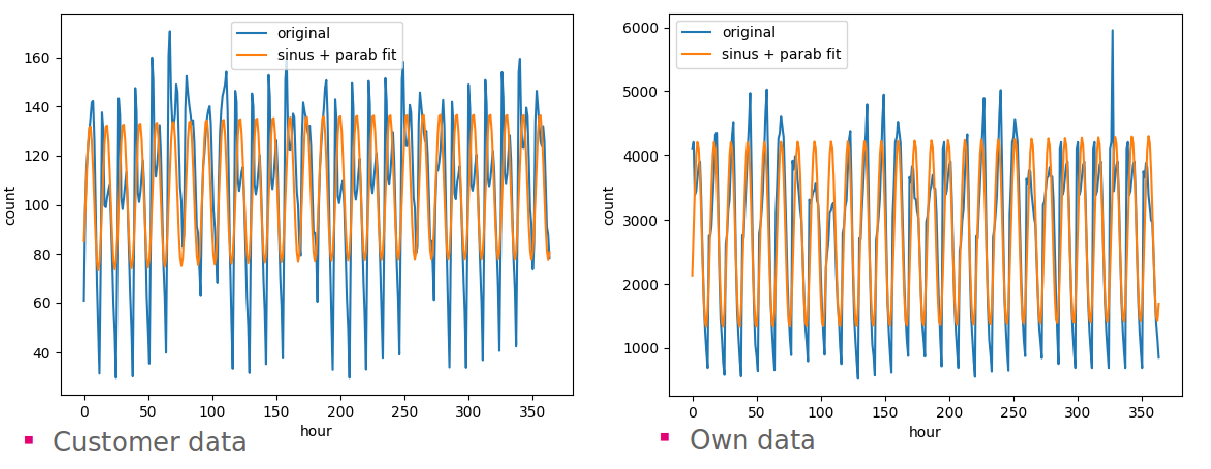 hourly visits and footfalls over all
locations
hourly visits and footfalls over all
locations
We can see that the main difference between in the daily average is the midday peak
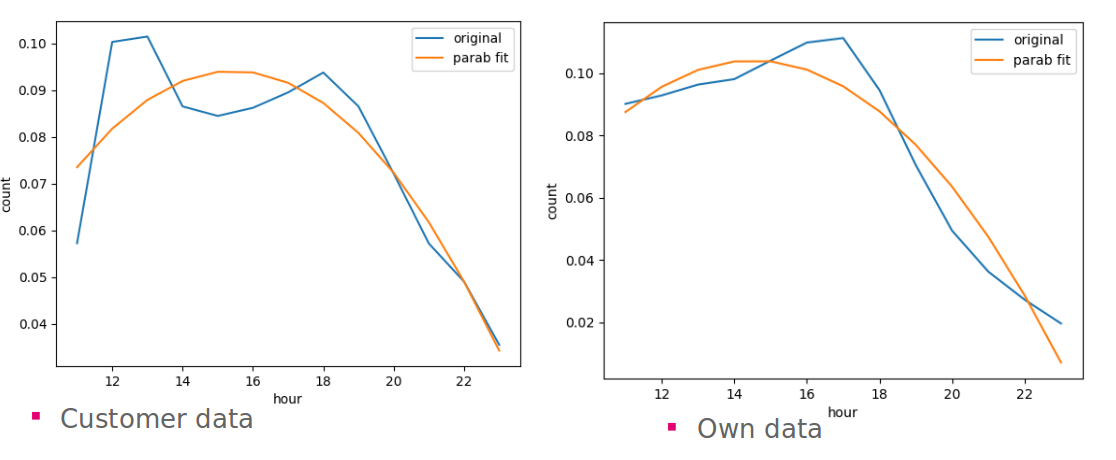 daily visits and footfalls over all
locations
daily visits and footfalls over all
locations
Customer data are more regular than footfall data
 total daily visits and footfalls over
all locations
total daily visits and footfalls over
all locations
We create a matrix representation of the input data to speed up
operations 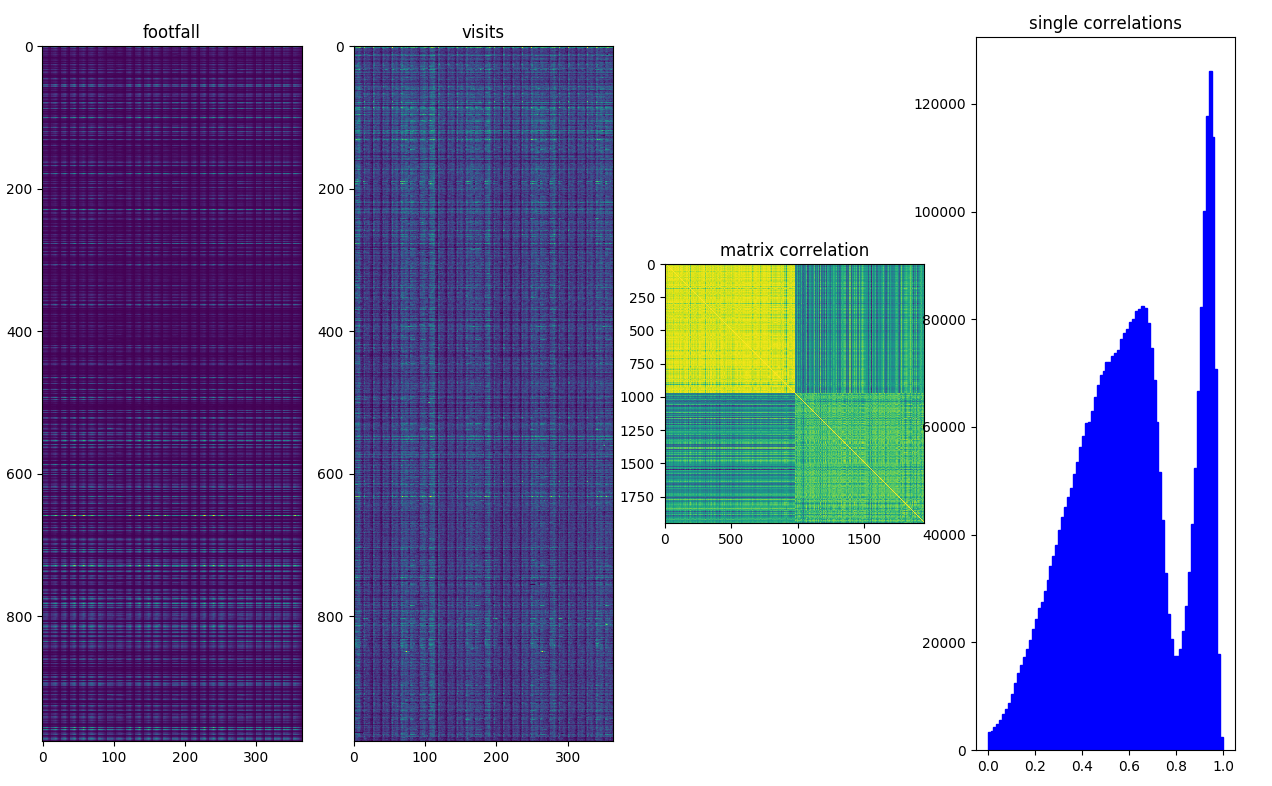 matrix representation of footfall and
visits and their mutual correlation
matrix representation of footfall and
visits and their mutual correlation
We calculate daily values of activities per sensor and we use correlation as scoring to understand how the influence of neighboring sensors can describe visitors.
We first calculate sensor cross correlation and keep only consistent sensors
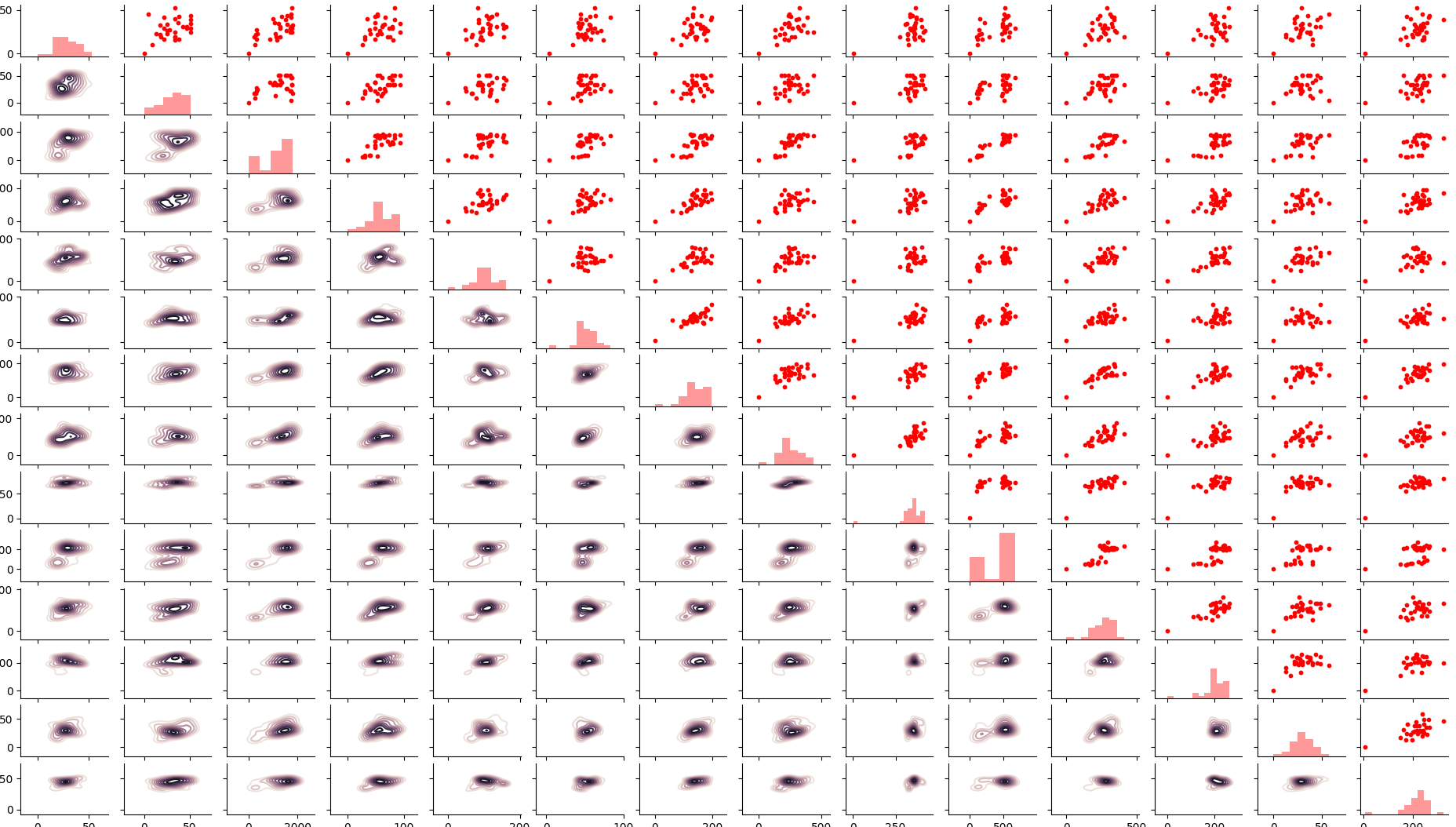 sensor cross
correlation
sensor cross
correlation
We than run a regression to estimate the weighting of the sensor activities versus visits. We filter out the most significant weight and we rerun the regression.
We do a consistency check and cluster the cells as restaurant activities.
If we consider all sensor with weight 1 we score 11% (of the location
over 0.6 correlation) 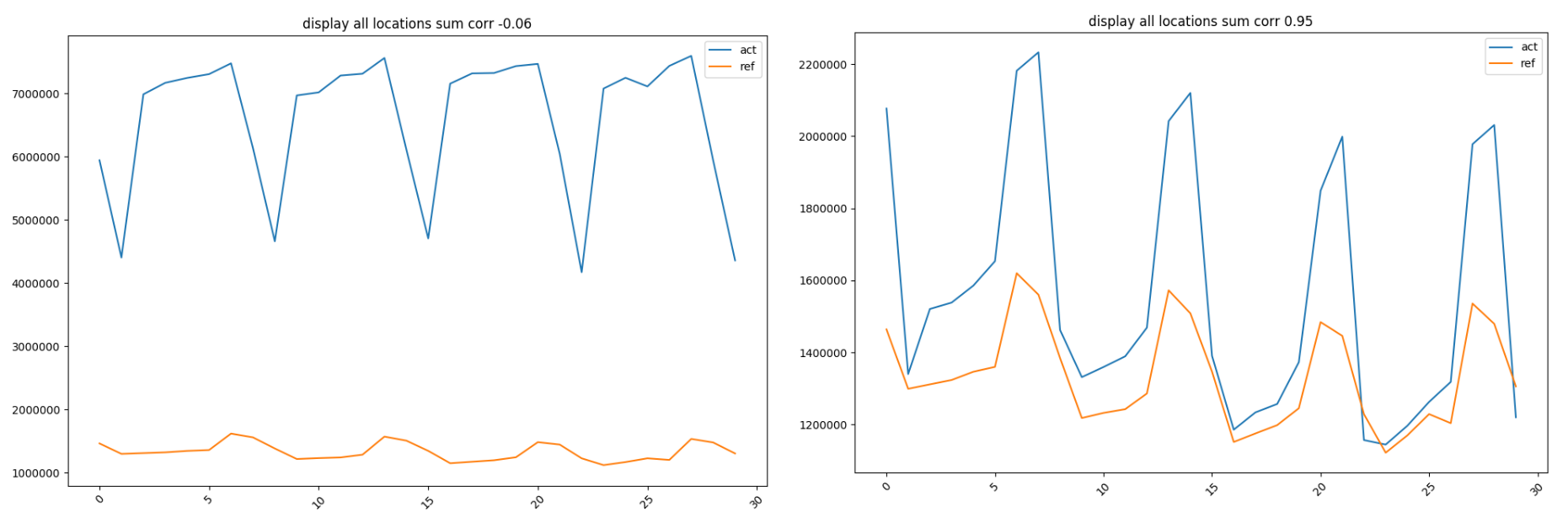 unweighted and weighted
sensor mapping
unweighted and weighted
sensor mapping
If we weight all sensors performing a linear regression we score 66%
We calculate the first score, cor, as the Pearson’s r
correlation: $$ r =
\frac{cov(x,y)}{\sigma_x \sigma_y} $$
We calculate the relative difference as: $$ d = 2\frac{\bar{x}-\bar{y}}{\bar{x}+\bar{y}}
$$
And the relative error as: $$
s = 2\frac{\sqrt{\sum (x - y)^2}}{N(\bar{x}+\bar{y})} $$
We have few location where footfall correlates with visitors and we don’t see a clear dependency between scoring and location type.
 boxplot
foot_vist
boxplot
foot_vist
If we consider daily values activities and footfall don’t correlate at first with reference data.
 performances over sources
performances over sources
Activities and footfalls have a good correlation.
We perform a regression of measured data versus reference receipts and we calculate the performance over all locations.
The first regressor is country wide, the second is site type specific:
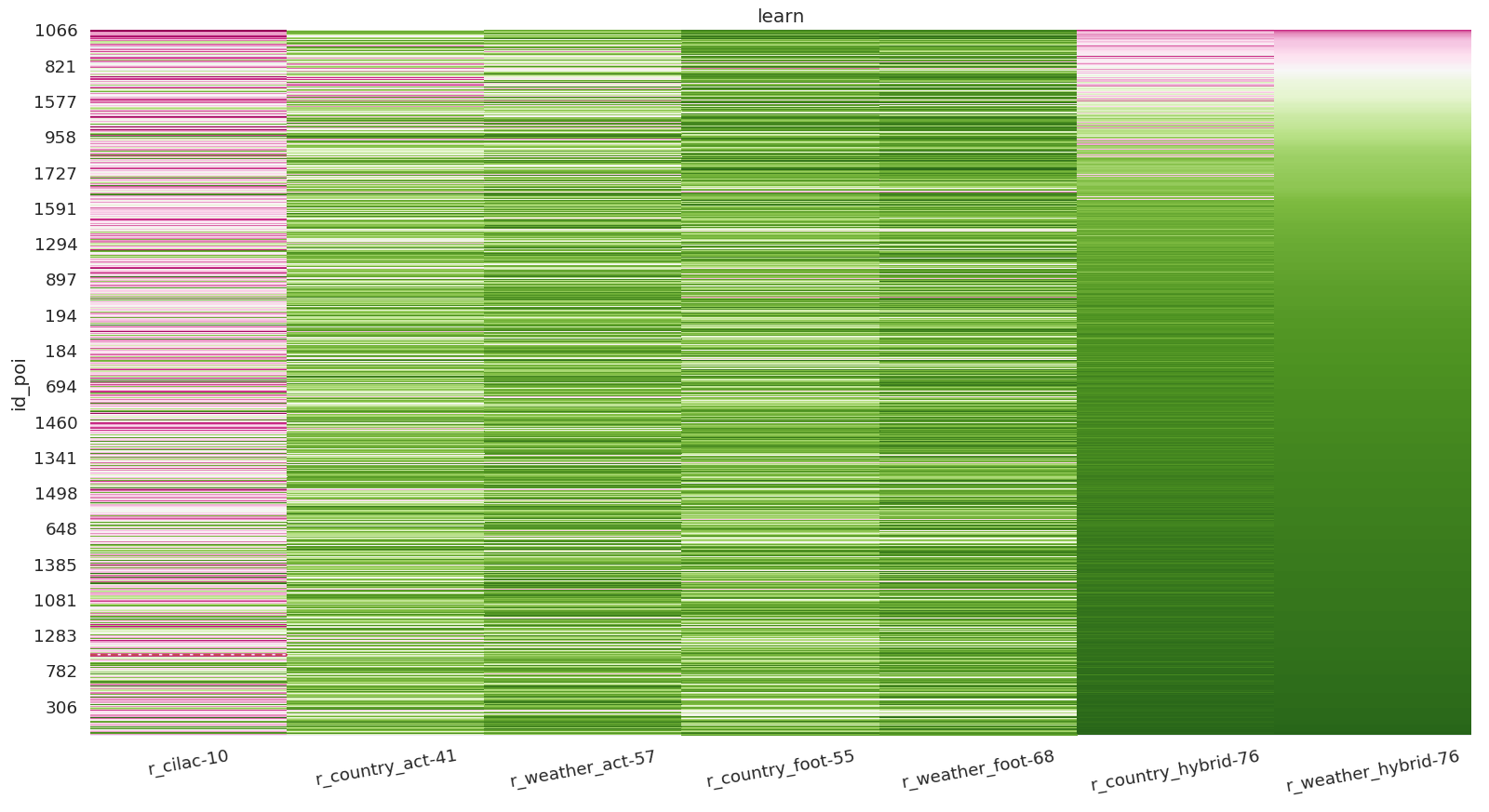 performance over iterations
performance over iterations
We can see that an hybrid model is the best solution to cover 3/4 of the locations.
We have collected and selected many features and we have to simplify
the parameter space: 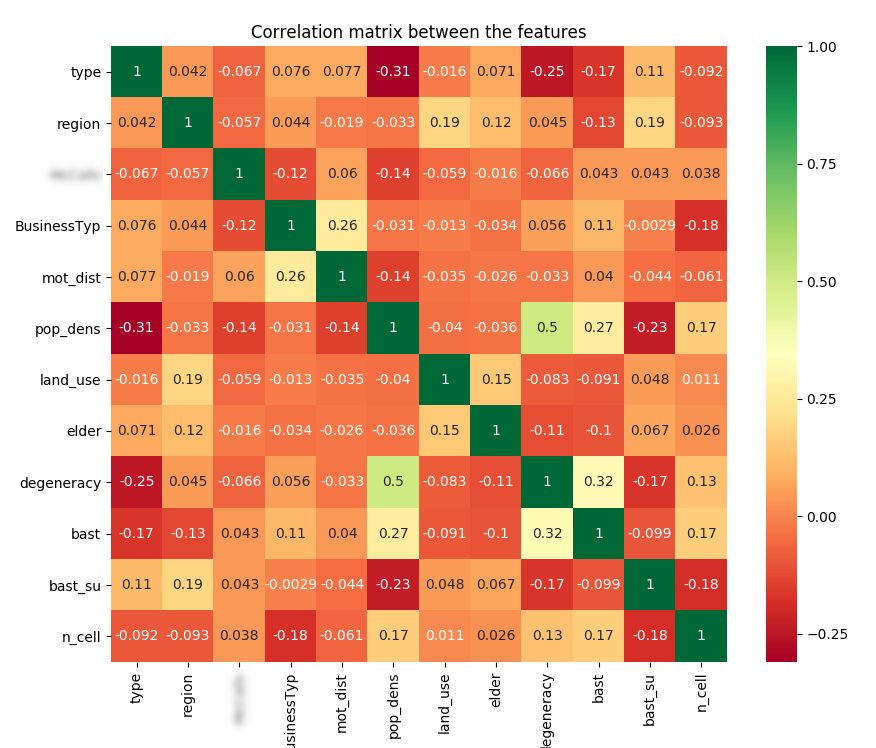 correlation between features
correlation between features
We select the features which have the higher variance. 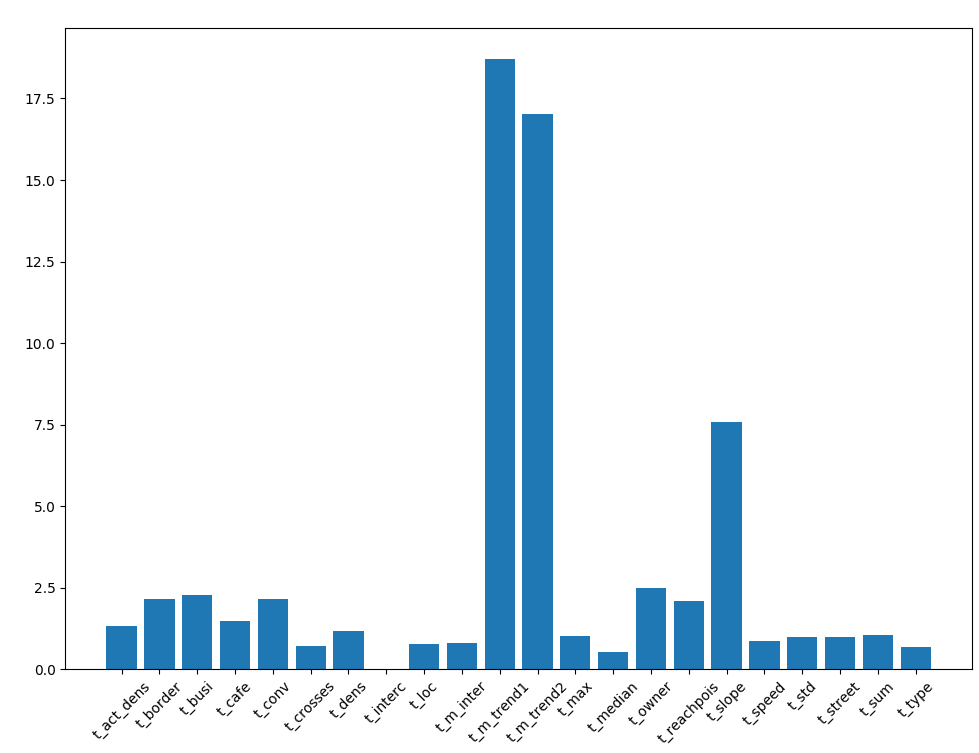 relative variance of single
features
relative variance of single
features
We can see that the selected variances are mutally well distributed
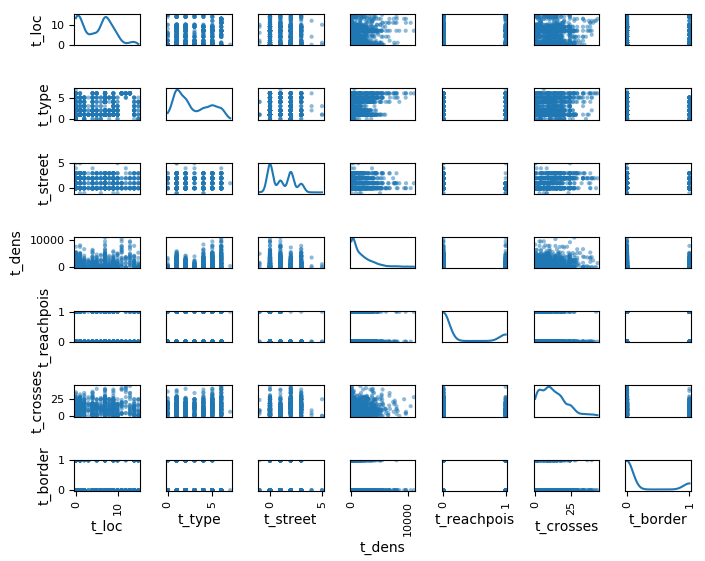 mutual distribution of selected
features
mutual distribution of selected
features
We are interested in understanding which time series is relevant for the training of the model. To quantify feature importance instead of using a different model that returns feature importance (like xgboost or extra tree classifier) but might not correspond to the importance of the real model we just retrained the model removing each time one of the feature.
First we fix pair of locations (one train one test) and we retrain the models without one feature to see how performances change depending on that feature.
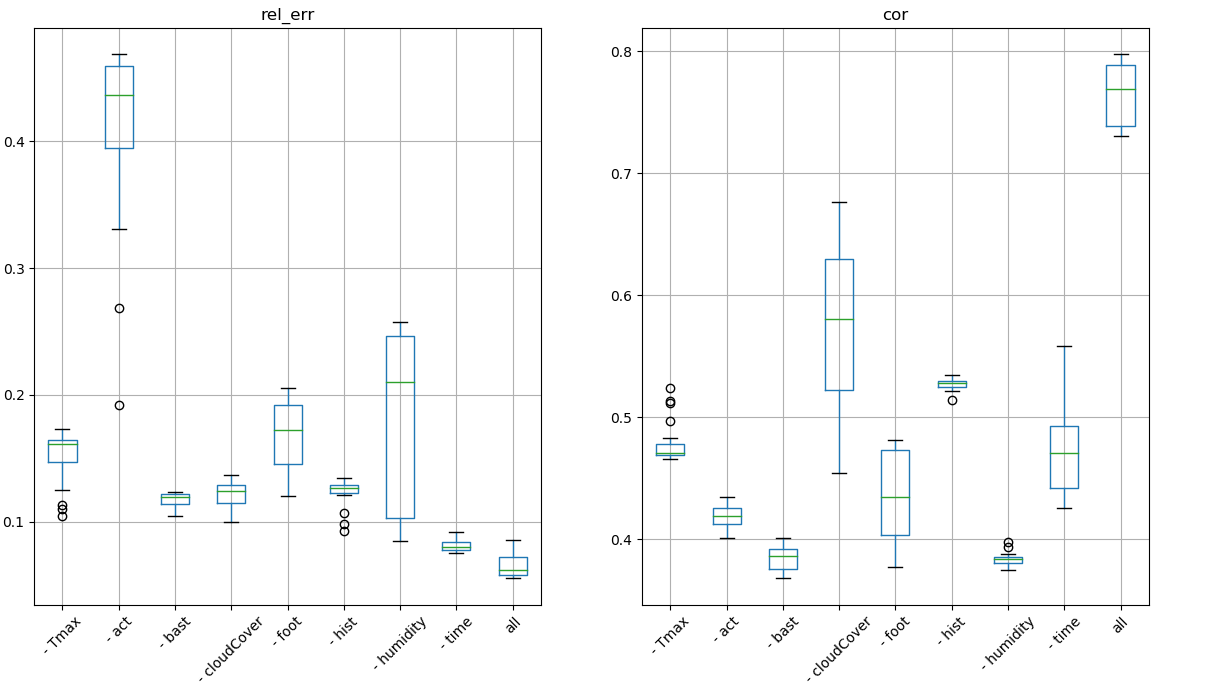 feature
importance on performances, fix pair
feature
importance on performances, fix pair
If we train on one location and we test on a different random location we don’t have stable results to interpret
 feature importance on
performances
feature importance on
performances
We want to predict the number of visits based on pure geographical data by running a regressor with cross validation
 reference vs prediction
reference vs prediction
Now we have to iterate the knowledge over unknown locations.
We use a long short term memory with keras to create a supervised version of the time series and forecast the time series of another location.
We use train_longShort to load and process all the sources.
For each location we take the following time series shifting each series by two steps for the preparing the supervised data set.
 set of time series used
set of time series used
We can see that in few epochs the test set performance converges to the train set performance.
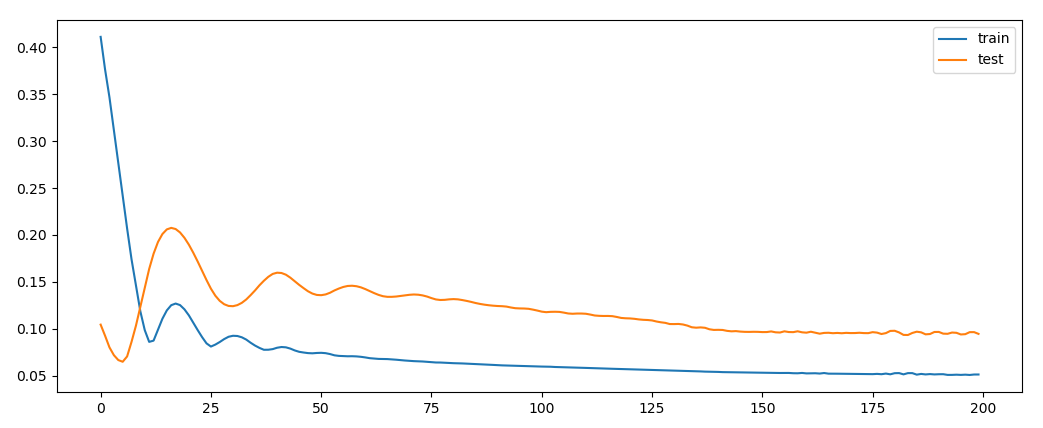 learning
cycle
learning
cycle
The test group consists in a random location taken within the same group. We see that performances don’t stabilize over time but rather get worse which depends on the type of location as we can see later.
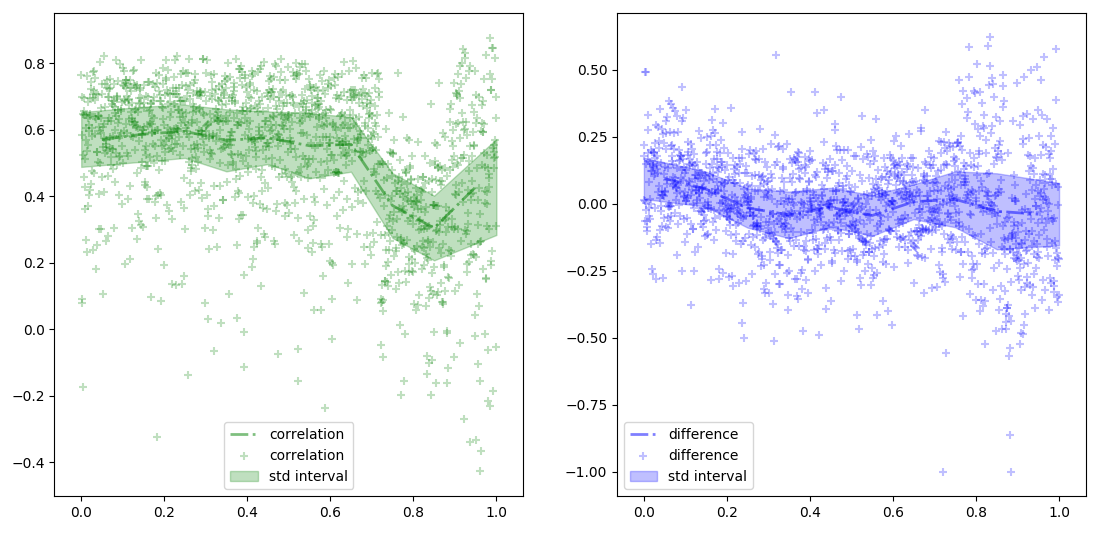 score history
score history
Overall performances are good for relative error and relative difference for correlation we will se that performances are strongly type dependent.
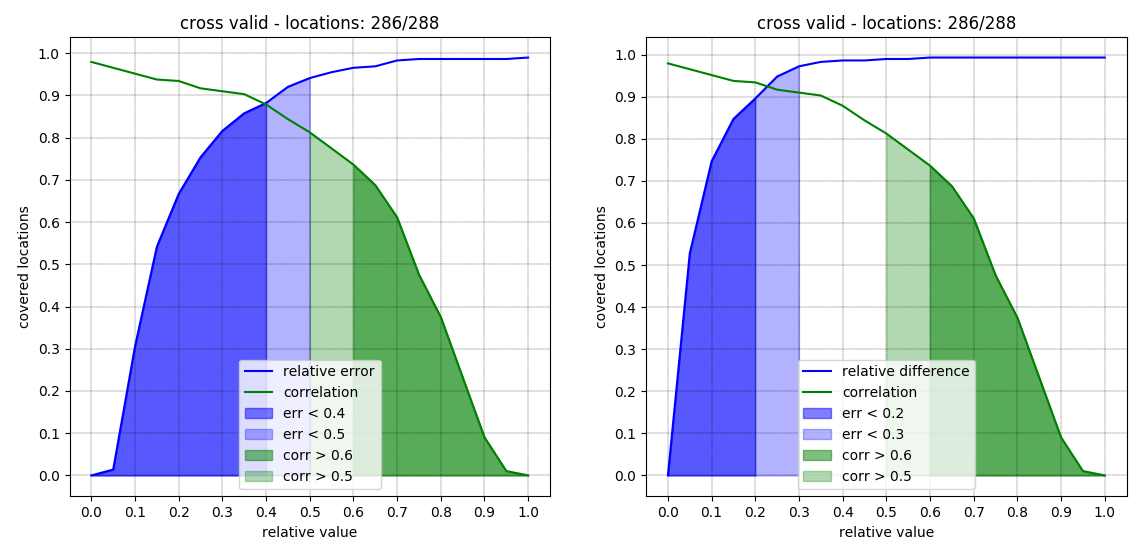 kpi for fixed validation set
kpi for fixed validation set
A fix validation set is not necessary since performances stabilizes quickly over time.
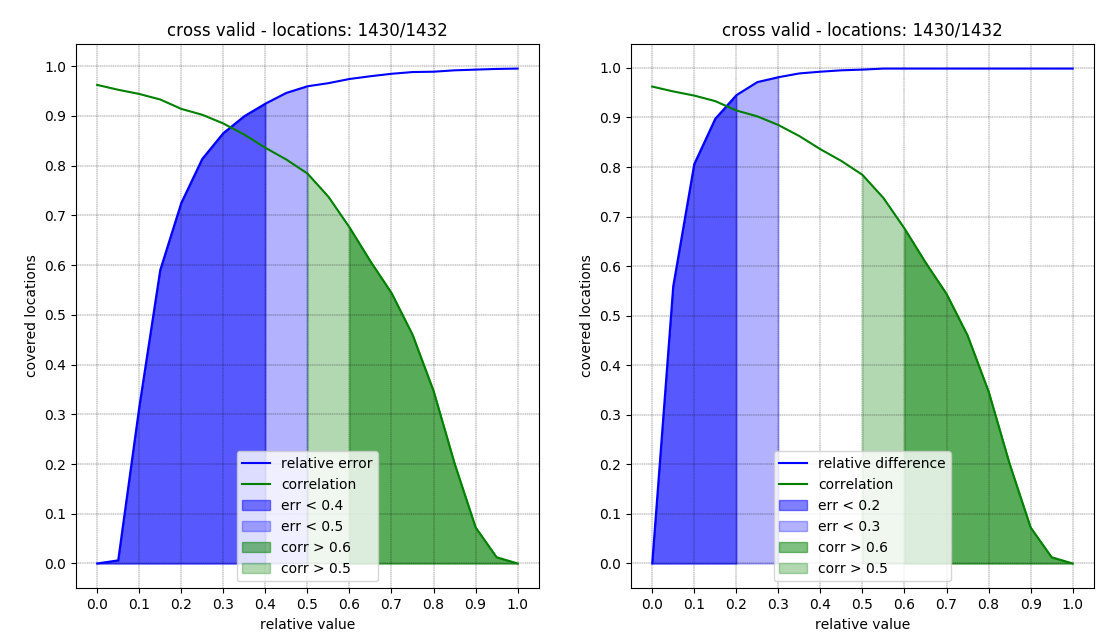 kpi relative error and relative
difference
kpi relative error and relative
difference
Relative error as a regular decay while correlation has a second peak around 0.4
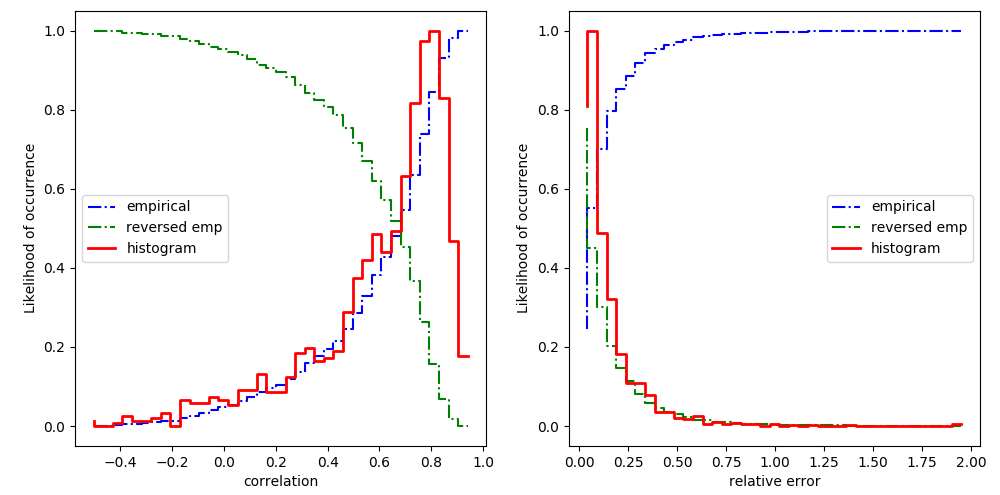 kpi histograms
kpi histograms
We indeed see that we have good performances on a freestander with drive but the satellite significantly drops overall performances
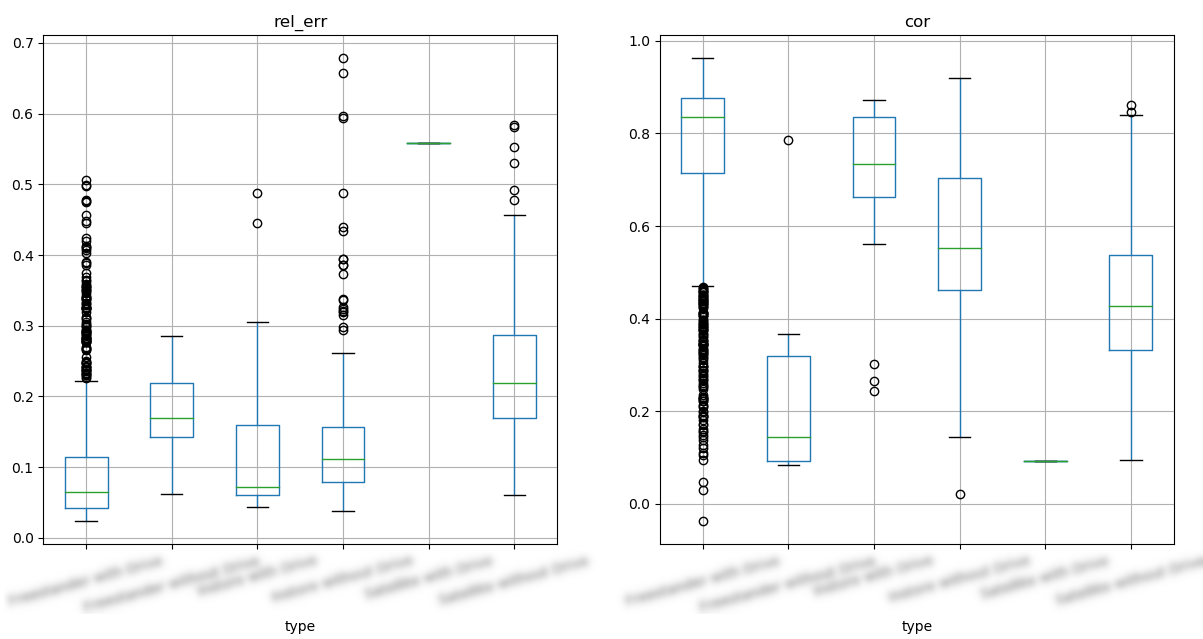 kpi distribution per type
kpi distribution per type
